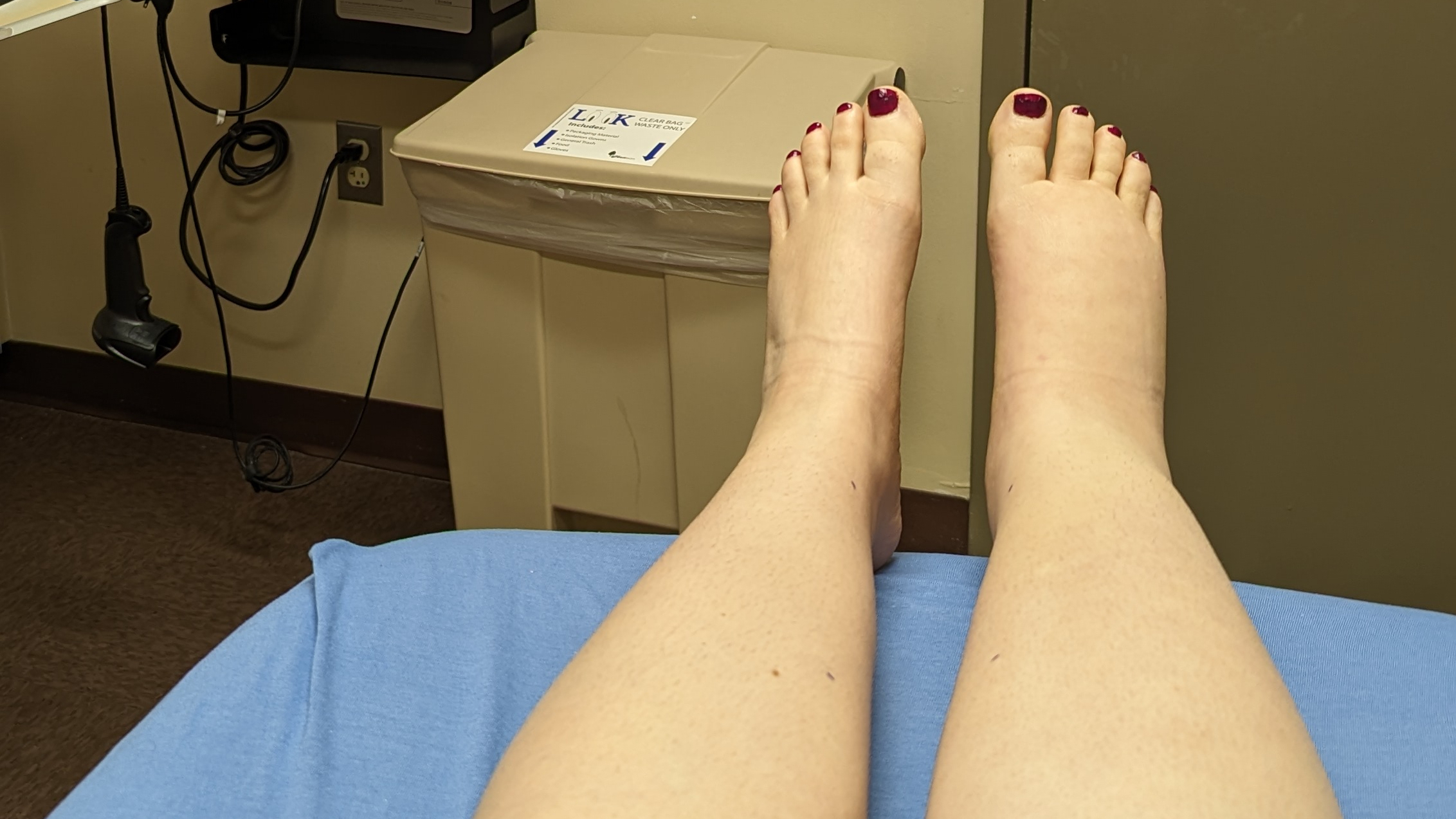The lymphedema narrative carries an overwhelming focus on women, probably due to the fact that women are twice as likely to develop it. Despite this statistic, the risk for developing lymphedema is the same, regardless of gender.
“Anatomically, the lymphatic system is not significantly different between men and women,” said occupational therapy clinical specialist Katherine Konosky in an interview with Michigan Medicine. “There’s no difference between men with lymphedema and women with lymphedema.”
Whether male or female, the pathophysiology of lymphedema is such that when your lymphatic system is compromised, protein-rich lymph fluid accumulates in the tissue of the affected area and causes swelling. From chemotherapy, lymph node removals, and radiation treatments to morbid obesity, intense sunburn, and insect bites — any trauma or damage to the lymphatics can present a risk factor for lymphedema. Even genetics can play a part.
Cancer surgeries and treatments are a common cause for secondary lymphedema. For example, roughly 16% of melanoma patients and about 10% of patients with cancers of the urinary system or genitals develop lymphedema.
I think lymphedema is often perceived as a “woman’s disease” because of its prevalence among breast cancer patients (another disease where men are affected yet lack representation), but even then, gender doesn’t make much difference: a 2011 population-based study found that the incidence of lymphedema in male breast cancer patients aged 65 and over is nearly the same as that of female breast cancer patients.
“Surgery for prostate cancer is the only one that’s gender specific [to men],” Konosky went on to explain. “Otherwise, it’s the same for women: treatment for cancers of the head and neck, bladder or kidney, liver or pancreas, parts of the digestive system – really, any cancer treatment in which lymph nodes are removed or the flow of lymphatic fluid has been damaged or blocked.”
Delaying treatment
“Lymphedema is not gender specific in presentation,” said Dr. Kristina Sanchez in an interview with VEIN magazine. “However, men tend to delay asking about their symptoms and seeking treatment, so they often have more advanced disease by the time they are treated, versus women.”
There’s been research into the gender disparity in symptom reporting, with a 2001 study titled “Somatic Symptom Reporting in Women and Men” citing a number of influencing factors, such as the socialization and social roles of men and women, gender bias in research and clinical practice, and symptom appraisal and assessment by the patients themselves.
In her practice, Katherine Konosky has observed that men address their lymphedema diagnosis differently than women: “Men seem more concerned about what’s going on right now and less concerned about factors affecting the future. I had one male patient who was worried about his leg bandages falling down when he walked, so he duct-taped them in place. That’s concern for the present.”
“In contrast,” she continued, “I don’t think I’ve ever had a male patient say that he typically takes extra care when doing something rough to cover and protect the limb with lymphedema. That would demonstrate concern for the future.”

What we can do
“With men in particular, I find that they must have enough information,” Dr. Sanchez told VEIN magazine. “Because if they don’t understand, they may not ask for help.”
Patient education is key to a good prognosis, but treating or educating men with lymphedema often requires some extra effort from healthcare professionals as they sometimes need a push to be proactive.
“There are very few articles on lymphedema in men specifically,” Dr. Sanchez said. “But knowing that lymphedema affects men and women equally, we just need to know what to look for, what questions to ask and how to talk about it.”
This week on The Lymphie Life: elevating male voices
We know lymphie dudes are out there. They’re our friends and family, our inspiration and our advocates. Lymphedema doesn’t discriminate: men have it, too, and leaving them out of the conversation risks alienating them from much-needed treatment and support.
Now, a blog post about the need to include men in the female-dominated lymphedema narrative just didn’t feel right without some actual male voices, so I reached out on Instagram and Facebook and asked: what’s your experience been like as a male within a female-dominated community?
Emails, comments, and messages flooded in from men around the world sharing their own personal stories and insight. It was incredibly moving and even a bit overwhelming. Because of the big response, I’m going to compile everything into a series of posts that’ll be published throughout the week rather than one long post, so please do check back for the next installment!
We’ve got a wonderful lymphie community with folks of all ages, genders, and backgrounds. This week, though, I aim to elevate male voices within the lymphedema community. I hope you’ll join me!




Leave a Reply to Karl E FranzCancel reply